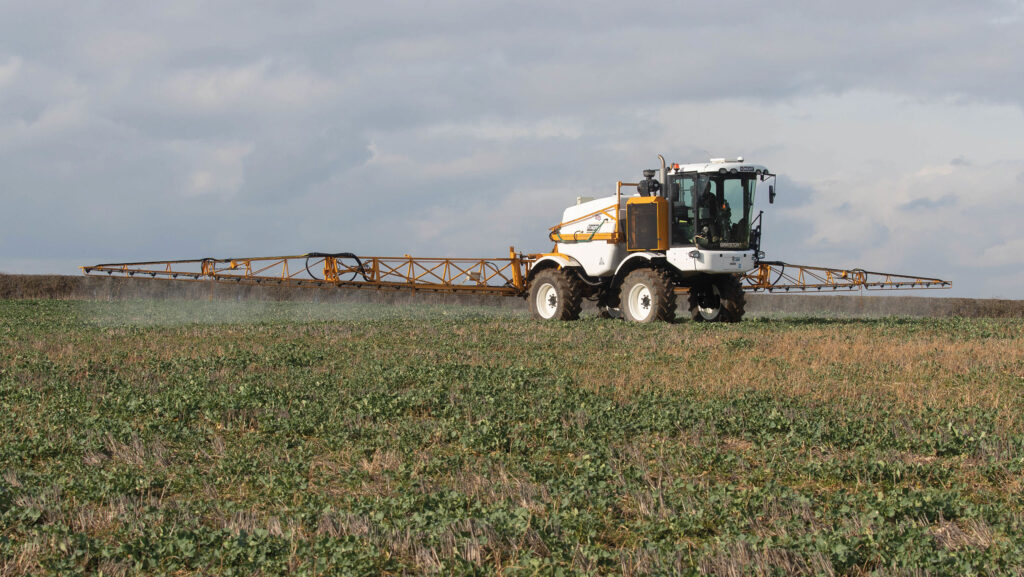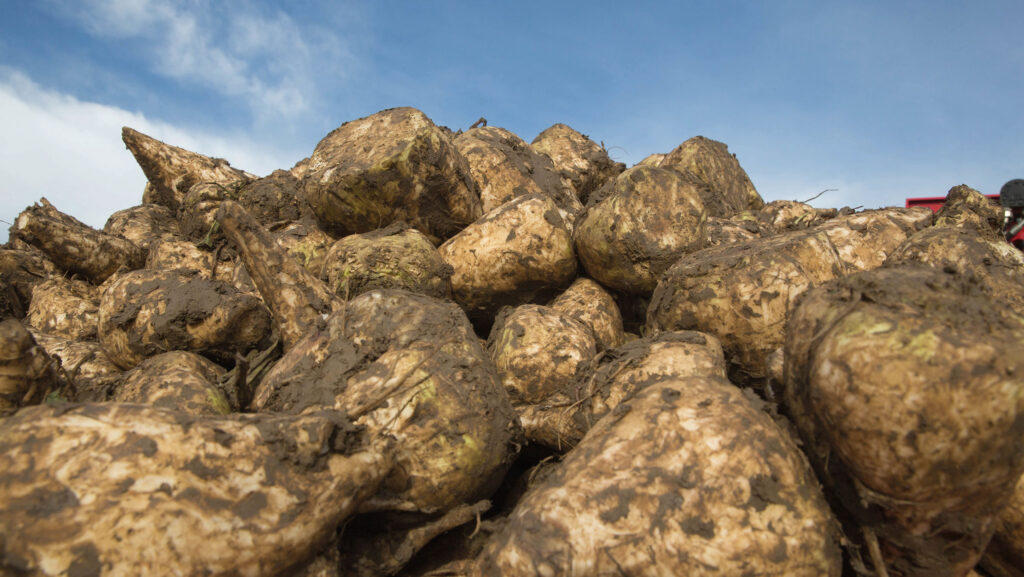Crop Watch: Soils too warm for propyzamide sprays in OSR
 © Tim Scrivener
© Tim Scrivener Two of the key topics this week are related to oilseed rape (OSR). Some crops have reached the spray threshold for phoma and fungicides are being applied to manage the disease.
There is also debate on when to apply propyzamide to tackle emerging weeds, although our agronomists agree that soils are still to warm to apply.
See also: Tips on achieving healthy hedgerows on farm
South
Alice Whitehead, Zantra (Essex/Kent)
At last, we have a break in the weather in the South East. It seems a luxury to have consecutive drilling days, with the start of November bringing dry, mild conditions.
Even so, these haven’t been particularly conducive to drying soil surfaces or crop canopies for spray applications, with little wind and heavy dews.
This makes it tricky for getting spraying done when spray contact and retention is important.
Most broad-leaved weed clean-ups in OSR are complete and crop biomass is starting to build.
Phoma is relatively easy to find and fungicide recommendations are out, which consist of azoles to offer protectant activity.
Soils are still too warm for propyzamide applications for grassweeds, so this will be done in a separate application later in the month.
Forward wheats
The most forward wheat crops have had an insecticide application to target aphids. There are plenty of aphids about due to the warm temperatures.
I think these crops will require another application before the sprayer is put away for the winter, but I will follow the T-sum calculation for guidance.
I am not seeing many emerged grassweeds in crop at the moment, which is pleasing after a couple of years of high pressure.
Even so, known problem fields will still be receiving a top up residual herbicide included with the insecticide.
This has varied depending on the pre-emergence cocktail to ensure we are not over-loading actives such as pendimethalin and flufenacet, as well as taking following crops into consideration when using long-lasting actives such as diflufenican.
Hybrid barley is yet to get out the starting blocks as growers were forced into later drilling due to the weather.
Crops are at a couple of leaves and I would like to see them put on some rapid growth to compete with any grassweeds, as these crops tend to be used as a tool against blackgrass.
I am a little cautious about applying more residual herbicide on barley – crops need to be free of stress symptoms and waterlogging first.
It has been a tough few weeks down here for growers in the fruit and vegetable sectors – the weather has been challenging as harvest gangs finish off the season and crop quality is variable.
This has been topped off with the Budget and the prospect of another minimum wage increase combined with National Insurance rises – the staffing costs for next year will be eye-watering.
West
Jamie Armstrong, AICC/Wessex Agronomy (Wilts, Gloucs and Hants)
Drilling progress in our region has been pretty hit and miss, mainly depending on soil type. Farms on lighter soils have mostly wrapped up.
Meanwhile, those with heavier soils are still battling tricky ground conditions.
Phoma is now at the threshold for treatment (10-20% plants infected) in many crops, so fungicide applications are well under way.
Smaller crops, especially those that aren’t well-established, are particularly at risk.
We’re also spotting turnip sawfly larvae munching away at the later-drilled crops, so where this is an issue, consider mixing an insecticide with your fungicide applications.
Aphids have been easy to find over the past few weeks, especially in cereal crops at or beyond the one-leaf stage.
Applying insecticides once the T-sum 170-day degree threshold is reached will help manage the population and lower the risk of barley yellow dwarf virus (BYDV) infection.
You can tank-mix an insecticide with follow-up residual herbicides, or even with pre-emergence applications that might now be going on post-emergence.
Winter barley and slug pressure
With conditions being as they are, some farms have not been able to establish their planned winter barley areas, leading to a switch over to winter wheat instead.
Given the current market conditions, along with the yield, brackling, and lodging consequences of barley drilled in late October and onwards, this is now the better option.
Slugs continue to be a headache, particularly in cereals following oilseed rape, which are at higher risk. Keep up with ferric phosphate applications where slug populations are rampant.
As cereals hit the two-leaf stage, they usually start to grow away from the threat, but it’s still important to monitor slug activity beyond this point.
Cereals drilled in early to mid-October that have emerged are looking surprisingly good.
However, rolling has caused some issues this year, especially on headlands, likely due to the combination of turning with the drill, rolling, and heavy rainfall shortly after planting.
Keep chipping away at drilling, be cautious with rolling.
If conditions are questionable, it might be wise to hold off on rolling until spring when the risk of damaging soil structure and over-consolidation is lower. Your soil will thank you for it.
North
Conor Campbell, Hutchinsons (Northumberland)
I’ve been famous the past few weeks for saying “all I need is two weeks of good weather to get finished up” and somehow the weather gods have played ball.
After some wet weather through the middle of October, which has unfortunately resulted in some lost headlands, the forecast has suddenly improved and given us a reasonable dry spell to finish the last of any drilling and get caught up with spraying.
The last of harvest has been finished in recent weeks with spring beans and maize land now cleared.
The break in the forecast has allowed us to sow wheat into relatively good conditions, especially for the time of year.
Earlier sown cereals are now beginning to tiller and for land not in IPM4, the mild conditions would provide an excellent opportunity to protect against BYDV and load crops with important micro-nutrients ahead of the winter.
The more biomass we can build heading into the winter, the greater the crop potential in the spring.
With harvest delayed by two to three weeks, which in turn pushed the start of drilling back, it is important we encourage these crops along as must as possible.
Propyzamide debate
The big topic up for debate is when to apply propyzamide to oilseed rape crops.
The advice is to wait until ground temperatures have fallen below 10C.
This is primarily to extend the residual activity of the active against grassweeds, such as blackgrass.
While this may be important for some, most crops in the county will not suffer with blackgrass, but will have actively been growing broad-leaved weeds and annual meadow grass.
These will be our main targets and so you may wish to apply your herbicides now, while these are still actively growing, to ensure a good result.
This is also a good time to manage crop growth, as some of them are big, as well as disease management and plant nutrition ahead of the winter months.
I acknowledge that this has been an extremely challenging season right from the off for everyone.
I hope we can all have some time over the coming months to recharge and reflect.
I try to use this time to look at what we can learn from the past season, what went well and what didn’t go so well. Here’s to a good spring.
East
Becky Finbow, Agrovista (Norfolk/Suffolk)

© Tim Scrivener
We have had some beautiful autumnal days here in Suffolk, allowing farmers to continue with drilling cereals and lifting sugar beet.
Most of my winter crops are now standing nicely in the row and walking has started for grassweeds.
Where crops were drilled slightly shallower, or on sprayer overlaps, there is some yellowing as the crop takes up a small dose of the pre-emergence application. But there is no need to worry as the next leaf is green and isn’t far behind.
Where crops were rolled after drilling, pre-emergence sprays have done an excellent job so I’m concentrating primarily on looking for aphids and considering any nutrition the crop may require.
As it remains, mild aphids are still flying and carrying barley yellow dwarf virus with them – so please be mindful crops are likely to require an insecticide.
Unfortunately, where seed-beds haven’t been as good, blackgrass and ryegrass are starting to shoot along with the crop.
Luckily, where I chose to go with aclonifen pre-emergence on most winter wheat crops I still have the option of applying Luximo (cinmethylin) post-emergence to help with blackgrass control.
Where Luximo chemistry has already been used, conventional mixtures of flufenacet and diflufenican would be recommended.
On lighter land where broad-leaved weeds can be an issue, particularly groundsel, metribuzin-based products can be useful post-emergence.
Sugar beet
We have had some very successful beet crops being lifted at the moment, with Bury factory sugar levels being above average at 16.85%.
The beet themselves aren’t huge but, as germination rates were high in the spring, there are a lot of them.
Conditions following are also very reasonable, so drills have been working close behind the harvester.
Although it is not common to find slugs on a cereal crops post beet, it is still worth keeping an eye out as slugs have been problematic this autumn.
It won’t be long until temperatures start to drop and oilseed rape crops start to die back for the winter, when we will be considering propyzamide applications.
I may be a little premature, but remember to log onto the Corteva Kerb Weather Data Tool and put in your postcode to find out if conditions are suitable for application.

